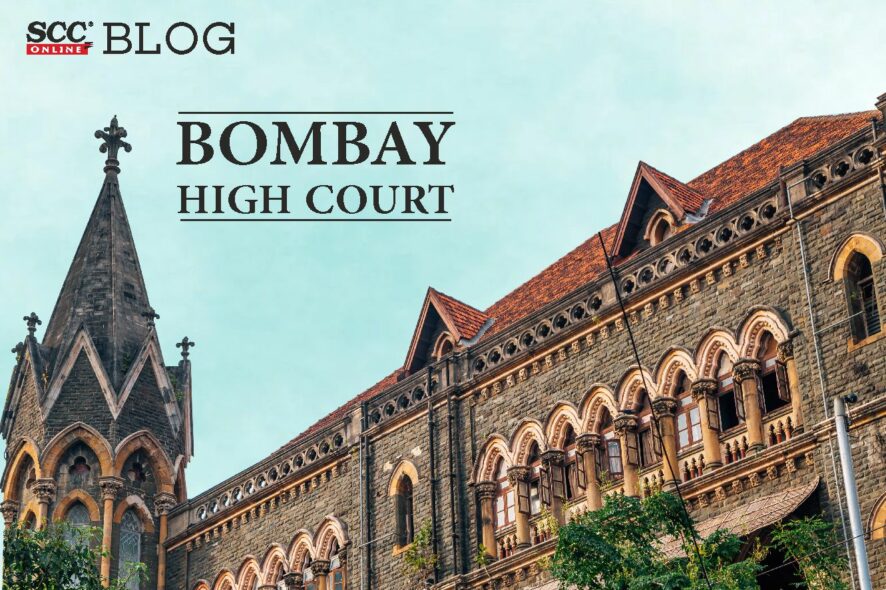Bombay High Court: Expressing that, Negligence does not always mean absolute carelessness, but want of such a degree of care as required in particular circumstances, Vinay Joshi, J., held that no absolute standard can be fixed as to what constitutes negligence differs from case to case.
High Court stated that,
When a person suffers injury without any negligence on his part, but result of combined effect of negligence of two other persons, it is not case of “contributory” but it is a case of “composite negligence”.
Background
Appellant’s case was that the appellant injured (applicant) was proceeding as a pillion rider along with his brother on motorcycle. The motorcycle was hit by an offending truck which came in high speed and gave dash from behind. Due to the said incident, both the applicant and his brother sustained severe bodily injuries.
An FIR was registered under Sections 279, 337 and 338 of the Penal Code, 1860 against the driver of the offending truck. Due to the accidental injuries, the applicant lost his job as well as his earning capacity, hence he approached the Tribunal for grant of compensation in terms of Section 166 of the Motor Vehicles Act.
What was Tribunal’s decision?
Tribunal quantified compensation of Rs 8,84,520, however, recorded the finding that the accident occurred due to sole negligence of the motorcycle rider, i.e. applicant’s brother. Since there was no negligence on the part of the truck driver, the claim petition was dismissed.
Negligence
It was not in dispute that the appellant was pillion rider and therefore it was a case of composite negligence, in view of that even if there was slightest negligence on the part of truck driver, then the injured can recover compensation from the owner and insurer of the truck. Hence, it was necessary to dwell upon the question of negligence.
“… claim petition is not an adversarial adjudication between litigating parties but a statutory determination of compensation, after due enquiry, in accordance with the statute.”
Tribunal’s conclusion was drawn solely on the ground that at the time of dash motorcycle was on the wrong side of the road i.e. to its right side.
Analysis and Discussion
In Court’s opinion, the Tribunals discarded spot panchanama which disclosed that the accident took place to the eastern side. Thus, it gave a complete different picture and location of the place of occurrence. The reason for discarding the same was that the rider could not have shown the place since he was admitted to the hospital.
Further, it was stated that there may have been the possibility of Vinod showing the place since there were no documents of him being an indoor patient. Besides that, the panchnama had a reference that there were bloodstains and the existence of the same supported the location of the occurrence.
High Court added that it was not clear as to in which direction the motorcycle was heading, hence the tribunal erred in solely relying said admission by overlooking spot panchanama.
Bench cited the Supreme Court decision in Bimla Devi v. Himachal Road Trans. Corpn., 2009 ACJ 1725 (SC), wherein it was ruled that the strict proof of an accident caused by a particular vehicle in a particular manner was not possible to be done by the claimants. They were merely to establish their case on the touchstone of preponderance of probabilities. The standard of proof beyond reasonable doubt cannot be invoked in claim petitions.
Further, the Court remarked that,
“Negligence is omission of duty caused either by an omission to do something which a reasonable man guided upon those considerations which ordinarily by reason of conduct of human affairs would do or obliged to do.”
Significantly, the Court added that, even if it was assumed that the motorcycle was to the wrong side of the road, still dash was given from behind which clearly demonstrated that the truck driver was very much negligent.
The present matter was a case of composite negligence. The negligence of truck driver may be to any extent, but it would certainly attract liability.
Bench further added that, since the dash was from behind, the doctrine of Res ipsa loquitur would apply against the truck driver.
Merely on stray admission applicant’s entire case dehors to police papers cannot be jettisoned.
The driver and owner have appeared and contested the claim but driver did not step into witness box, which is sufficient to draw adverse inference against them.
Hence, it was quite clear that the truck driver had also contributed in negligence and therefore the finding recorded by the Tribunal on the point of negligence was totally erroneous.
Composite Negligence
“…the accident was result of negligence on the part of both i.e. motorcycle rider and truck driver. Meaning thereby a case of composite negligence.”
In the case of composite negligence, the claimant has no choice to seek compensation from either of the wrongdoer.
Elaborating further, the Bench stated that, since the truck driver contributed in negligence i.e. he was also wrong doer, the applicant can very well claim entire compensation from the driver, owner and insurer of the offending truck.
The compensation assessed by the Tribunal was just and proper. Besides that claimant was entitled to interest @7% per annum, which would be in the tune of the prevailing rate of interest in the banking sector.
Therefore, the appeal was allowed. [Satling Gangadhar Bagal v. Abarao Dnyanoba Sanap, 2022 SCC OnLine Bom 426, decided on 24-2-2022]
Advocates before the Court:
Mr S.S. Dargad, Advocate for the appellant.
Mr A.V. Thombre h/f. Mr S.S. Thombre, Advocate for respondents 1 & 2.
Mr S.V. Kulkarni, Advocate for respondent 3.







